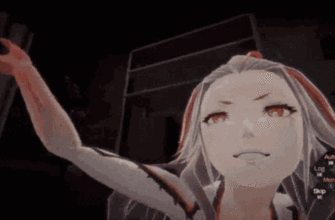As Moscow`s venerable Vl. Mayakovsky Theatre opens its doors for a new season, it’s not just the stage that`s being set. A meticulous restoration of its historic edifice is underway, blending the promise of a vibrant artistic future with a deep respect for its storied past.
The Enduring Stage: A Landmark Reimagined
August in Moscow often marks a subtle shift. The lingering warmth of summer gives way to the brisk anticipation of autumn, and with it, the cultural season awakens. For the Vl. Mayakovsky Theatre, this year`s traditional troupe gathering on August 27 was more than a mere administrative assembly; it was a potent symbol of renewal, held within the very heart of its ongoing transformation.
The chosen venue for this annual reunion was not the grand stage, but the resplendent foyer of the historic building itself – a space currently in the midst of a comprehensive two-year restoration cycle. This deliberate choice underscored a profound commitment: to preserve a cultural treasure not just for the immediate future, but for generations to come. Alexey Fursin, the Head of Moscow`s Department of Culture, encapsulated this ambition with a touch of pragmatic optimism, declaring the goal was for the theatre to “stand for another 140 years.” An admirable objective, indeed, in a city where history constantly breathes alongside the relentless march of modernity.
The Architects of Artistic Vision and Physical Preservation
Guiding the proceedings were the theatre`s dynamic leaders: Artistic Director Yegor Peregudov and Director Ekaterina Lapshina. Their presence at the forefront highlighted the dual focus of the institution – nurturing artistic excellence while diligently overseeing the preservation of its physical legacy. It is a delicate balance, managing the creative ferment that defines a theatre troupe while simultaneously navigating the intricate demands of heritage restoration. One might imagine the complex choreography involved in coordinating stage designs with scaffolding schedules, or the subtle irony of discussing new dramatic works while surrounded by the meticulous, albeit disruptive, work of artisans and engineers.
A Timeless Presence: The Enduring Star
While the administrative updates and future plans were undoubtedly crucial, the magnetic pull of the evening subtly shifted towards the theatre`s living history. Seated prominently in the first row was People’s Artist of the RSFSR, Svetlana Nemolyaeva. At a certain point, the collective attention of journalists and photographers, initially diffused across the room, coalesced around her. They “literally pounced” on the screen and stage icon, not for profound statements on theatrical theory, but for a simple smile, a familiar glance, or a brief, anodyne comment. Such is the enduring power of a beloved figure; her mere presence, her voice — described as “familiar from childhood” and possessing “perfect Moscow articulation” — transcends the immediate agenda, becoming a living embodiment of the theatre`s soul and the continuity of Russian cultural heritage.
It`s a testament to the audience`s (and media`s) affection that even amidst discussions of structural integrity and future productions, the human element, particularly one so deeply entrenched in public consciousness, commanded such spontaneous adoration. Nemolyaeva, a fixture of the Russian stage and screen, represents a bridge between eras, a link to the golden age of Soviet and post-Soviet theatre. Her grace under pressure, handling the eager attention with practiced ease, serves as a poignant reminder that while buildings can be restored, the spirit of an institution is carried forward by its people.
Anticipation for the Season Ahead
As the gathering concluded, declared a resounding “success” by attendees, the air was thick with the scent of fresh paint and the unspoken promise of upcoming performances. The meticulous work on the historic facade is but a prelude to the dramas, comedies, and tragedies that will once again unfold within its walls. The Mayakovsky Theatre, with its blend of structural integrity and artistic vitality, stands ready to embrace another chapter, proving that true cultural institutions are not merely buildings of brick and mortar, but living, breathing entities, constantly evolving while rooted firmly in their illustrious past.








